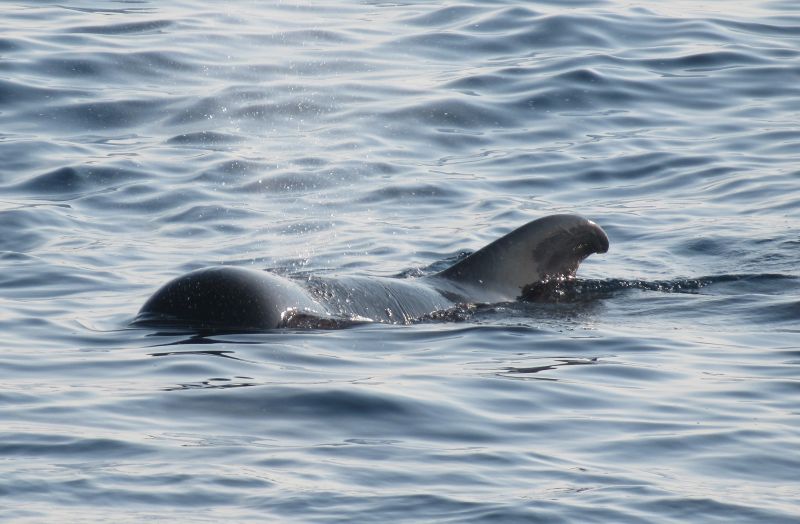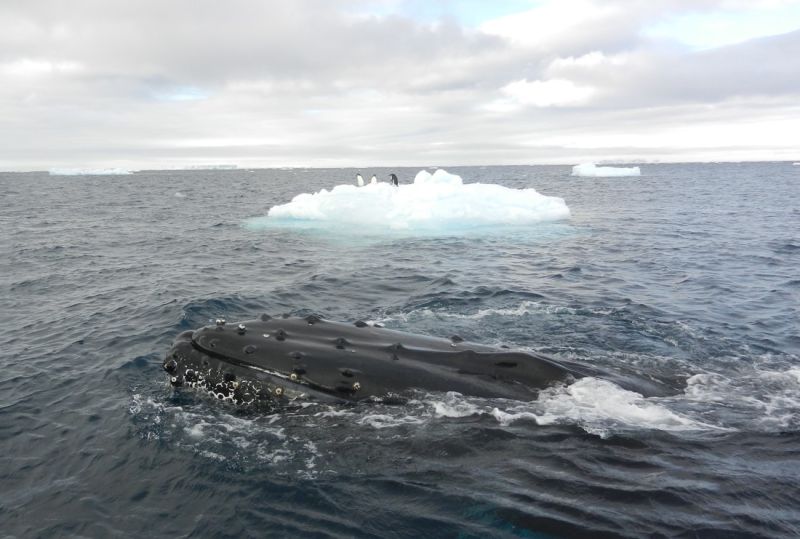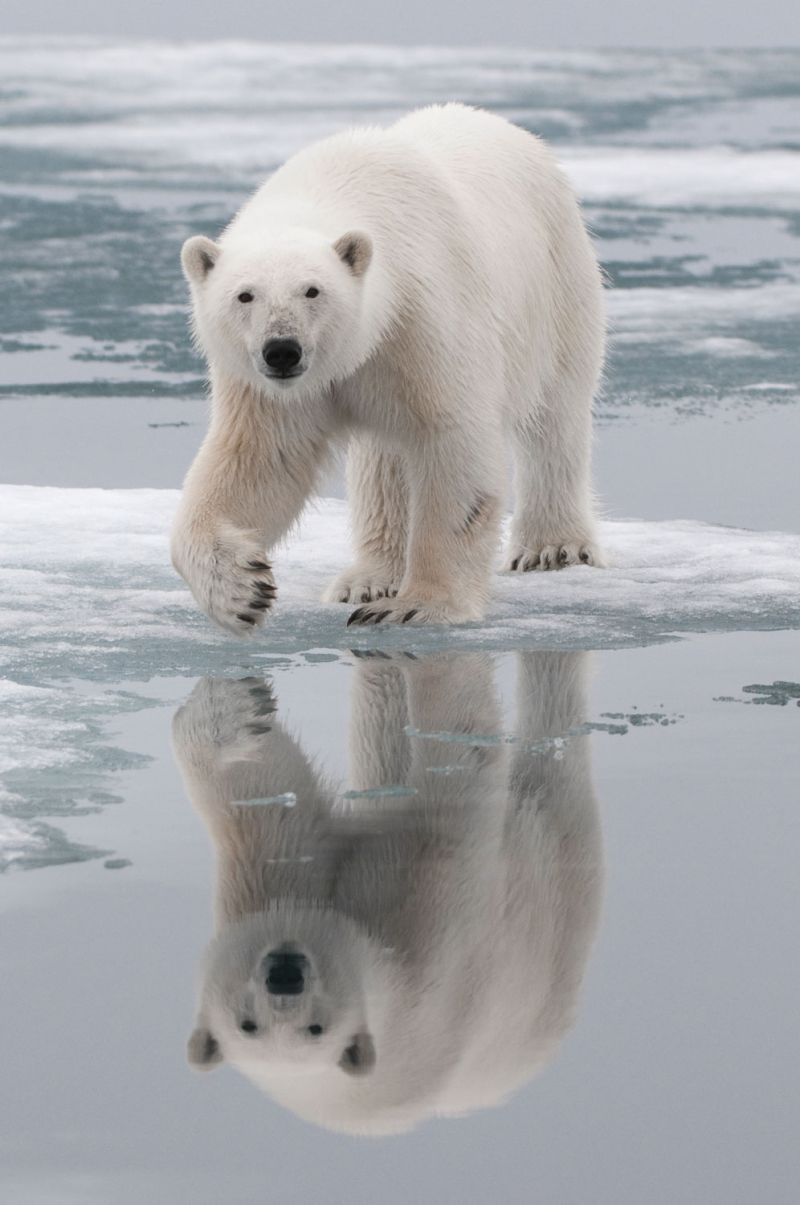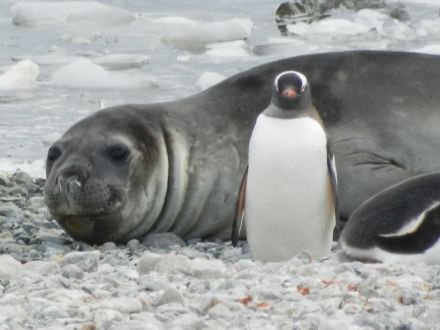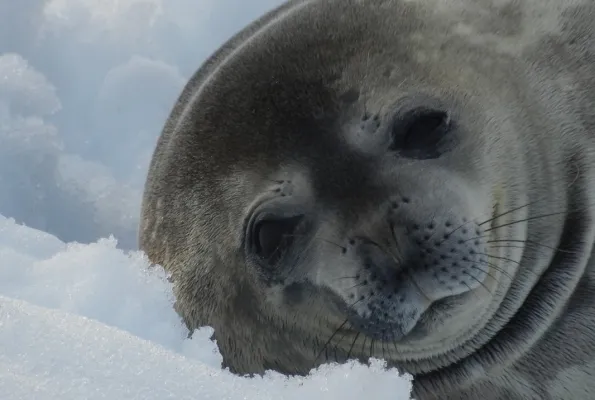
NSF supporting marine mammal science around the world
Did you know that 11% of federal investments in research on marine mammals is made by the U.S. National Science Foundation?
In 2020, the NSF marine mammal research budget totaled $8.67 million, the third largest provider of marine mammal science funding after the National Oceanic and Atmospheric Administration and the U.S. Navy.
Marine mammals include whales, dolphins, seals, sea lions, manatees, polar bears and sea otters. As species at the top of the food chain in a changing environment, they have become quintessential indicators of climate change and human impacts. Today, researchers studying marine mammals take extreme caution to ensure that their work does not negatively impact the species or their environment.
The U.S. Marine Mammal Protection Act was passed in 1972, making 2022 its golden anniversary -- 50 years of studying and protecting marine mammals in U.S. waters and on the high seas. To celebrate, here are some highlights of the groundbreaking marine mammal science supported by NSF.
The effect of climate change and ocean warming on pilot whales
Scientists at Stony Brook University have been investigating the effect of climate change on the movement of whales and dolphins and their prey. Researchers have assumed that warm-blooded marine mammals would be less impacted by changing water temperatures compared to their cold-blooded prey. However, the distribution of long-finned pilot whales in the waters of the northeastern U.S. shifted northwards over the 25-year research period as ocean temperatures rapidly warmed.
This rate of movement was surprising. In fact, the predators moved at three times the rate that their fish and squid prey species moved in response to climate change.
How Antarctic seals navigate under the ice
Weddell seals live on Antarctic ice sheets but make holes in the ice with their teeth to dive into the cold water to find prey. When they dive beneath the ice, Weddell seals may swim to a depth of several hundred meters into the darkness. But how do they find their way back to their ice hole to breathe?
Lee Fuiman and a team of NSF researchers from the University of Texas looked into how they manage this feat. It was thought that perhaps Weddell seals might have been using their excellent hearing to listen for sounds that the water makes in the ice hole. Another suggestion was that they can detect lines of magnetism, in effect having an inbuilt compass. Such a magnetic sense has been found in many species of fish, amphibians, birds, turtles and some mammals like bats. It's been suggested that foxes may have an ability to detect magnetic fields, so for seals, who are their evolutionary relatives, having an inbuilt compass was not so far-fetched. However, the researchers found that it looks like the seals are using visual landmarks, that they can see from below the ice sheet, to navigate in their travels. The seals have excellent vision and can see well in low light conditions. However, the researchers still need to discover how the seals navigate at night and during the long, dark, Antarctic winter.
The ecological importance of baleen whales in Antarctica
Between 1910 and 1970, an estimated 1.5 million baleen whales were killed in the waters of the Southern Ocean around Antarctica. These whales were hunted primarily for their blubber, largely for the margarine industry that flourished after World War I. One of the major food sources for these whales is krill, a shrimp-like crustacean found in huge numbers in Antarctic waters. Scientists used to think that with the decrease in the number of whales, the krill populations would have expanded. However, the opposite may have occurred.
The research of NSF grantee Matthew Savoca of Stanford University and his colleagues showed that baleen whales actually ate up to three times as much krill as previously thought. Before whaling decimated whale populations, the number of krill that would have had to be in the Southern Ocean to feed them was at least 430 million tonnes. This is twice as much krill as is currently found around Antarctica. With the removal of so many whales, a major krill predator, why did the krill population decrease so dramatically?
Savoca and colleagues think that the answer lies in the role that whales play in recycling nutrients. When whales defecate, they add nutrients to polar waters, which dramatically affect ocean productivity. For example, scientists estimate that before their decline, whales helped to circulate 12,000 tonnes of iron a year -- an essential ocean nutrient found only in trace amounts. Now whales circulate just 1,200 tonnes a year, which may have negative impacts on krill. As such, conserving whales and helping their numbers to recover may help to make ecosystems more productive.
Savoca says that restoring whale numbers "will have benefits for everything from biodiversity conservation to fisheries yield to carbon storage."
The problem of marine mammal mass mortalities from disease outbreaks
There has been an increasing number of mass mortality events reported in marine species around the world due to outbreaks of new and emerging diseases. These disease outbreaks have affected species from corals to seabirds, but the increasing number of mass mortality events involving marine mammals has been particularly visible.
In an NSF study, Claire Sanderson and Kathleen Alexander (of Virginia Polytechnic Institute and State University, Blacksburg) reviewed marine mammal mass mortalities between 1955 and 2018 due to disease outbreaks. A mass mortality event was defined as "a devastating number of fatalities within the same species over a brief period of time." For example, an outbreak of canine distemper in 2000 led to the death of 10,000 endangered Caspian seals in less than a four-month period. Sanderson and Alexander discovered that nearly 14% of marine mammal species had been involved in one of these events, with viruses responsible for just under three-quarters of them.
Not only were viruses responsible for most outbreaks, but they also had higher mortality rates than bacterial diseases -- the virus death rate was 20 times higher. In addition, the researchers found that while mass mortality events were more common in seals, sea lions and walruses, events were also reported in ocean-going whales, dolphins and porpoises. The loss of so many apex predators in such a short period could have major impacts on ecosystems. One particularly important finding was that the disease outbreaks were related to increasing sea surface temperatures, raising serious concerns in a warming climate.
"This study provides critical information about how often these types of outbreaks are happening, which will also help us better understand disease threats to humans," said Sam Scheiner, a NSF program director in the Division of Environmental Biology.
The impacts of climate change and melting ice on polar bear diets
Normally, polar bears live on Arctic sea ice, hunting for their favorite prey – seals. These Arctic seals have thick blubber layers, which provide polar bears sufficient energy to survive the harsh polar climate. However, with the loss of sea ice in the Arctic, polar bears are increasingly being forced to hunt on land, where they cannot find seals and instead are feeding on birds, berries and vegetation, foods that are much lower in energy than their preferred seal prey.
Charles Robbins (Washington State University) and Karyn Rode (U.S. Geological Survey) are investigating the impact that the loss of sea ice and the resulting change in polar bear feeding habits are having on how many calories they burn, their body weight, movement and reproduction. Polar bears are the top land- and ice-based predator in the Arctic and are a key indicator species for changes. They are also socially and culturally important for indigenous peoples. The research will hopefully provide more insight into how climate change affects polar bears – an iconic symbol of the changing Arctic's impacts.
Ultimately, this research should help scientists better predict the polar bear's future and provide advice for the conservation and preservation of this threatened species.

